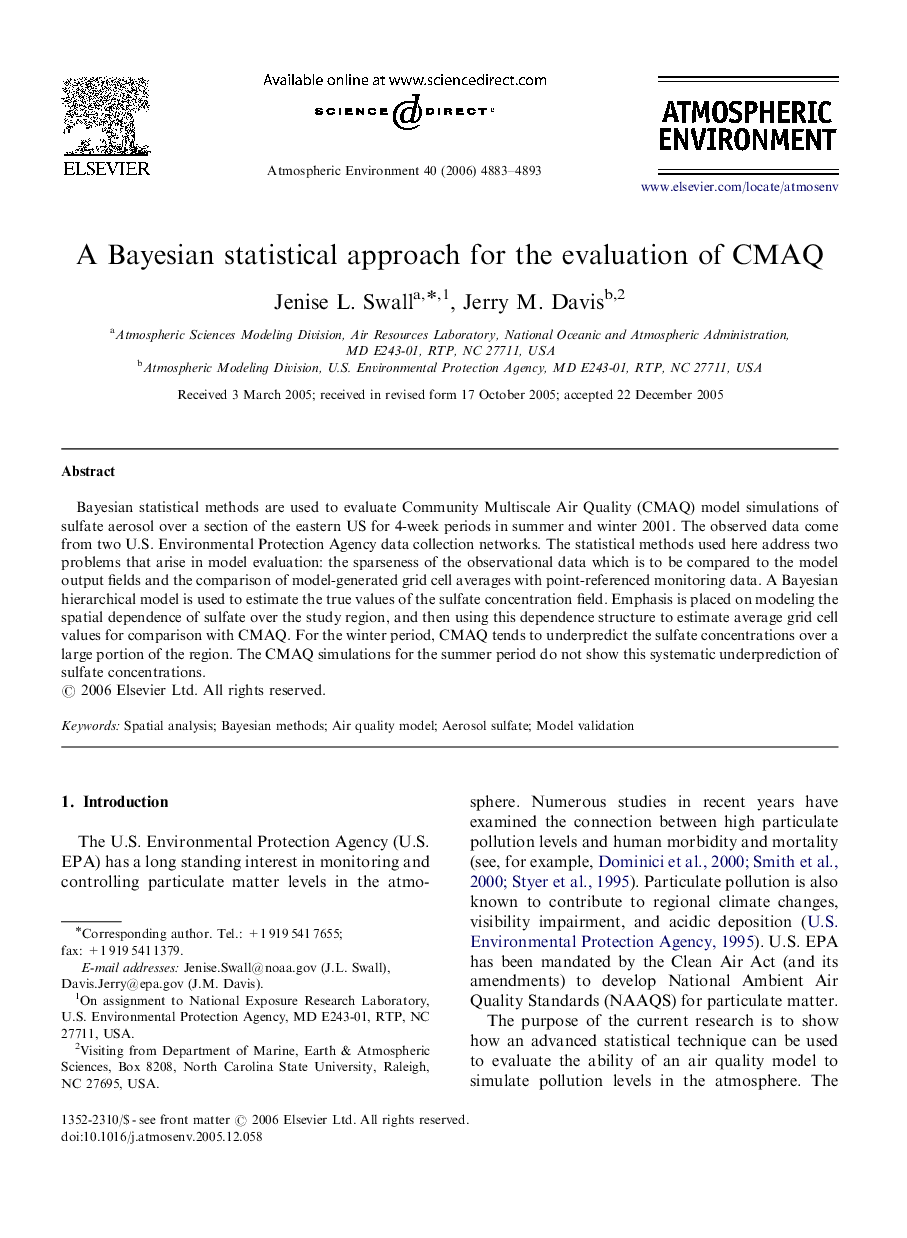| Article ID | Journal | Published Year | Pages | File Type |
|---|---|---|---|---|
| 4444490 | Atmospheric Environment | 2006 | 11 Pages |
Bayesian statistical methods are used to evaluate Community Multiscale Air Quality (CMAQ) model simulations of sulfate aerosol over a section of the eastern US for 4-week periods in summer and winter 2001. The observed data come from two U.S. Environmental Protection Agency data collection networks. The statistical methods used here address two problems that arise in model evaluation: the sparseness of the observational data which is to be compared to the model output fields and the comparison of model-generated grid cell averages with point-referenced monitoring data. A Bayesian hierarchical model is used to estimate the true values of the sulfate concentration field. Emphasis is placed on modeling the spatial dependence of sulfate over the study region, and then using this dependence structure to estimate average grid cell values for comparison with CMAQ. For the winter period, CMAQ tends to underpredict the sulfate concentrations over a large portion of the region. The CMAQ simulations for the summer period do not show this systematic underprediction of sulfate concentrations.
